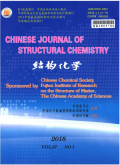Three-dimensional Quantitative Structure-activity Relationship Models of HIV-1 Integrase Inhibitors of DKAs
基本信息来源于合作网站,原文需代理用户跳转至来源网站获取
摘要:
As one of the three viral encoded enzymes of HIV-1 infection, HIV-1 integrase has become an attractive drug target for the treatment. Diketoacid compounds (DKAs) are one kind of potent and selective inhibitors of HIV-1 IN. In the present work, two three-dimensional QSAR techniques (CoMFA and CoMSIA) were employed to correlate the molecular structure with the activity of inhibiting the strand transfer for 147 DKAs. The all-oritation search (AOS) and all-placement search (APS) were used to optimize the CoMFA model. The diketo and keto-enol tautomers of DKAs were also used to establish the CoMFA models. The results indicated that the enol was the dominant conformation in the HIV-1 IN and DKAs complexes. It can provide a new method and reference to identify the bioactive conformation of drugs by using QSAR analysis. The best CoMSIA model, with five fields combined, implied that the hydrophobic field is very important as well as the steric and electrostatic fields. All models indicated favorable internal validation. A comparative analysis with the three models demonstrated that the CoMFA model seems to be more predictive. The contour maps could afford steric, electrostatic, hydrophobic and H-bond information about the interaction of ligand-receptor complex visually. The models would give some useful guidelines for designing novel and potent HIV-1 integrase inhibitors.

推荐文章
HIV-1整合酶抑制剂的研究进展
HIV-1整合酶
整合酶抑制剂
研究进展
二酮酸化合物与HIV-1整合酶识别的分子模拟研究
二酮酸类
HIV-1整合酶
分子对接
分子动力学模拟
自由能分解
CCR5:抗HIV-1药物的新靶点
CCR5
结构
功能
受体拮抗剂
深圳市HIV-1毒株的流行状况
人类免疫缺陷病毒1型
序列分析
亚型
巢式聚合酶链反应
内容分析
关键词云
关键词热度
相关文献总数
(/次)
(/年)
引文网络
引文网络
二级参考文献 (0)
共引文献 (0)
参考文献 (33)
节点文献
引证文献 (0)
同被引文献 (0)
二级引证文献 (0)
1993(1)
- 参考文献(1)
- 二级参考文献(0)
1994(1)
- 参考文献(1)
- 二级参考文献(0)
1995(2)
- 参考文献(2)
- 二级参考文献(0)
1998(1)
- 参考文献(1)
- 二级参考文献(0)
1999(4)
- 参考文献(4)
- 二级参考文献(0)
2000(2)
- 参考文献(2)
- 二级参考文献(0)
2002(1)
- 参考文献(1)
- 二级参考文献(0)
2004(3)
- 参考文献(3)
- 二级参考文献(0)
2005(2)
- 参考文献(2)
- 二级参考文献(0)
2006(7)
- 参考文献(7)
- 二级参考文献(0)
2007(4)
- 参考文献(4)
- 二级参考文献(0)
2008(2)
- 参考文献(2)
- 二级参考文献(0)
2010(3)
- 参考文献(3)
- 二级参考文献(0)
2012(0)
- 参考文献(0)
- 二级参考文献(0)
- 引证文献(0)
- 二级引证文献(0)
研究主题发展历程
节点文献
HIV-1
三维定量构效
关系模型
酶抑制剂
整合
CoMFA
CoMSIA
定量构效关系
研究起点
研究来源
研究分支
研究去脉
引文网络交叉学科
相关学者/机构
期刊影响力
结构化学
主办单位:
中国化学会
中国科学院福建物质结构研究所
出版周期:
月刊
ISSN:
0254-5861
CN:
35-1112/TQ
开本:
出版地:
福建省福州市杨桥西路155号
邮发代号:
创刊时间:
语种:
eng
出版文献量(篇)
5114
总下载数(次)
0
总被引数(次)
8477
期刊文献
相关文献
推荐文献
- 期刊分类
- 期刊(年)
- 期刊(期)
- 期刊推荐
力学
化学
地球物理学
地质学
基础科学综合
大学学报
天文学
天文学、地球科学
数学
气象学
海洋学
物理学
生物学
生物科学
自然地理学和测绘学
自然科学总论
自然科学理论与方法
资源科学
非线性科学与系统科学
结构化学2022
结构化学2021
结构化学2020
结构化学2019
结构化学2018
结构化学2017
结构化学2016
结构化学2015
结构化学2014
结构化学2013
结构化学2012
结构化学2011
结构化学2010
结构化学2009
结构化学2008
结构化学2007
结构化学2006
结构化学2005
结构化学2004
结构化学2003
结构化学2002
结构化学2001
结构化学2000
结构化学1999
结构化学2012年第9期
结构化学2012年第8期
结构化学2012年第7期
结构化学2012年第6期
结构化学2012年第5期
结构化学2012年第4期
结构化学2012年第3期
结构化学2012年第2期
结构化学2012年第12期
结构化学2012年第11期
结构化学2012年第10期
结构化学2012年第1期

 免费查重
免费查重










